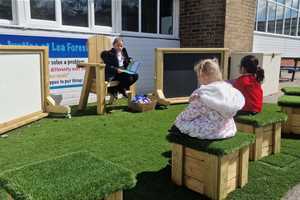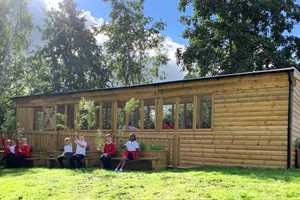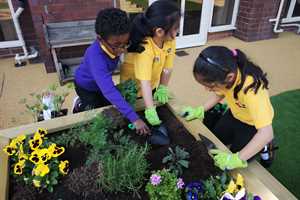
Outdoor Learning and Play
How Can Teachers and Parents Support the Acquisition of Reading Skills?
There are 5 Stages to children’s reading development according to Maryanne Wolf (2008) in her book Proust and the squid: the story and science of the reading brain. These five stages are:
- the emerging pre-reader (typically between 6 months to 6 years old)
- the novice reader (typically between 6 to 7 years old)
- the decoding reader (typically between 7 - 9 years old)
- the fluent, comprehending reader (typically between 9 - 15 years old) and
- the expert reader (typically 16 years and older).
What we must understand is that children can’t pick up books and read them, like children learn to walk. Walking is an instinctive, self-taught skill. Whereas, literacy is not an instinctive thing to do, nor is it to do with children maturing.
Literacy is a learnt skill and requires teaching and repetition to master it. Throughout children’s reading development there is one continual rule which all the authorities agree on…
“Experts [agree] that readers, no matter which reading philosophy is followed, have to practice, practice, practice.” Hough L (Winter 2011)
What walking and literacy have in common though, is that with both, children need to go through different learning and development stages to become proficient in each.
As children progress through the 5 Stages of literacy they are studying, repeating and mastering several reading strategies such as:
- using previous information
- foreseeing
- envisaging
- questioning
- understanding
- inferring
- reviewing
- creating
- concluding
- using each strategy in the right place.
Children’s literacy skills and learning is therefore formed through the 5 Stages using the strategies above to help them. They will progress through each stage when they are confident and proficient in the preceding stage.
How children progress through the stages is determined on their encounters with literacy before starting school and during their school years. Children will start school at different literacy levels depending on what they have been exposed to at home.
So, let’s look at the 5 Stages of a children’s reading development…
The Emerging Pre-Reader (typically between 6 months to 6 years old)
“The emergent pre-reader sits on ‘beloved laps,’ samples and learns from a full range of multiple sounds, words, concepts, images, stories, exposure to print, literacy materials, and just plain talk during the first five years of life. The major insight in this period is that reading never just happens to anyone. Emerging reading arises out of years of perceptions, increasing conceptual and social development, and cumulative exposures to oral and written language.” (Wolf, 2008, p 115)
This is the most important stage for children’s reading development. Where children show an interest in reading and willingly pick up books. Children need to be exposed to a great number of different genres of books to encourage:
- their interest in books
- how to handle and read a book
- their imagination
- talking about the illustrations
- seeing print
- hearing and recognising different letters and sounds
- hearing different words
- learning new concepts
- seeing new images
- learning new stories
- telling their own stories
- relating a story to their own experiences
- reading different genres of literacy
- rhyming words
- talking about books that have been read and
- their love of books and reading.
Typically, by the end of Stage 1, children can “pretend” to read, retell stories when looking and turning pages which have been read to them before, say the letters of the alphabet, write their own name, identify some signs, use pencils and paper. This is due to parents, siblings or teachers reading to children and encouraging them to ask questions and taking an interest in books. Usually at this stage children can understand thousands of words by the age of 6 years but can read very little of them.
How Can Parents / Teachers Help?
Learning to read isn’t a quick fix, it’s a labour of love over an infinite number of years. It is important that children have teacher and parental support to encourage children’s love for reading. What we do at this stage to nurture children’s reading, sets the correct foundations for the rest of their lives.
Here are some strategies that can be implemented:
- read aloud to children
- find lively and stimulating books to read to them
- ask children to pick a book and ask them why they picked it
- read the title, author and illustrator aloud to children
- show children how the print flows, using your finger to show where you start reading and in the direction it goes (left to right)
- look at the pictures in the book before reading it to understand the story
- predict the story by asking children questions: “What do you think will happen next?”, “Why?”
- relate the story to children’s own life and talk about it together
- look at the illustrations and link them to important events and the storyline
The Novice Reader (typically between 6 to 7 years old)
“The major discovery for a novice reader is ... [the] increasingly consolidated concept that letters connect to sounds of the language.” (Wolf, pp 117)
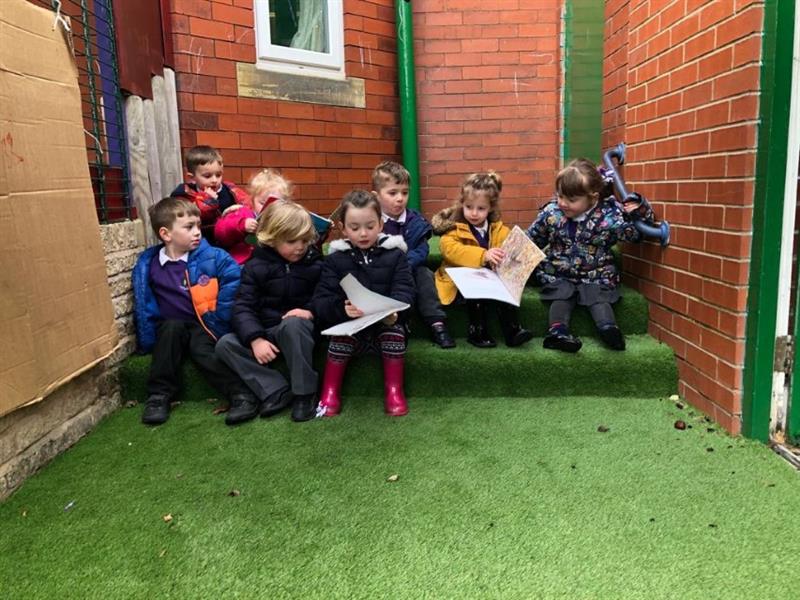
At Stage 2, children are being taught by a teacher or adult and will start to:
- recognise the first phases of Phonics (letters and sounds)
- understand the relationship between printed and spoken words
- read simple texts to enable them to “sound out” one syllable words
- read out aloud and understand “high frequency” words
- memorise stories
- use illustrations to tell the story
- read for meaning
- predict unknown words using visual clues
- use rhyming knowledge to make new words
- use multiple strategies to read new texts
To increase children’s literacy skills, teachers and adults should be reading varied and levelled books so that the children are improving their language development patterns, their vocabulary and their reading comprehension. By the end of Stage 2, most children can understand up to 4000 or more words and can read roughly about 600 words.
At this stage children will start to become little “readers” and their confidence will grow whilst participating more in the reading process.
How can Parents / Teachers Help?
Stage 2 is all about encouragement and willing the children to do well. With teacher and parent involvement they can encourage children to read aloud and allow children to predict words and support them in sounding them out correctly.
“Reading aloud underscores for children the relationship between their oral language and their written one. It provides novice readers with their own form of self-teaching.” (Wolf, pp 118)
Teachers and parents must also:
- continue to read stories aloud to children
- model how to question, predict and understand the text
- help children understand new vocabulary in the text
- point out meaningful letters and words (letters in the children’s name, mum, dog etc)
- point out signs, labels… even car registrations to encourage letter and sound recognition when out and about with children
The Decoding Reader (typically between 7 - 9 years old)
“If you listen to children in the decoder reader phase, you will ‘hear’ the difference. Gone are the painful, if exciting pronunciations ... In their place comes the sound of a smoother, more confident reader on the verge of becoming fluent.” (Wolf, pp 127)
Stage 3 shows children reading simple, familiar stories with increased fluency. With teacher and parental support, children are become proficient decoders as their literacy skills improve, allowing children to read a greater selection reading materials. There should still be teacher and parental involvement by reading to children a level above their actual reading age to encourage language development, increase their vocabulary and improve their reading comprehension. At this level children should be able to read around 3000 word and understand around 9000 when heard.
Children at Stage 3 will be able to:
- decode the text using familiar vocabulary to read familiar stories etc
- use various strategies to self-correct and read for meaning
- use illustration to help them comprehend the meaning of the text
- recognise how to tell a story
- comprehend and predict texts on their own
- use numerous strategies to read more fluently
- make informed presumptions when predicting what’s going on in the text
How can Parents / Teachers help?
Parents and teachers can help children enormously during the decoding stage. With little questions and tweaks children can become more fluent readers. When children are reading new words for the first time, they may use substitute words instead of the actual word. The key is in the questioning when children are reading unknown words. Here is an example:
Sentence: The tree’s roots were thick and long.
When children says … Rots instead of Roots.
- Parent/teacher: “Does that look right?”
Children: “Yes because it starts with “r”.
- Parent/teacher: “Does it sound right? The tree’s rots were thick and long.”
Children: “Ummm, I’m not sure…”
- Parent/teacher: “Does it make sense? The tree’s rots were thick and long.”
Children: “No, it doesn’t make sense, as to rot means to go mouldy.”
- Parent/teacher: “So if the word isn’t rot, look at the “oo” sound, what do you think the word is?”
Children: “Trees have roots, so the word is root. So, the “oo” is a long “oo” and not a short one”.
- Once understood, let the children read the sentence again so that it makes sense to them.
By questioning children, you are allowing them to improve their literacy skills by self-correcting and therefore encouraging their linguistic development.
The Fluent, Comprehending Reader (typically between 9 - 15 years old)
Stage 4 readers are now fluent readers who read to learn and increase their knowledge. Fluent readers will read all sorts of genres of books from: textbooks, fiction, non-fiction, newspapers, magazines, comics and poetry which will contain varied themes, ideas, language and vocabulary. They enjoy the experience of reading new texts by feeling new emotions, learning new perspectives and attitudes to different topics.
Fluent readers are therefore able to develop and understand the greater meaning of words allowing them to:
- read with enhanced fluency and speed
- read unknown words using phonic knowledge of phonemes and digraphs
- read with expression using punctuation marks
- use illustrations and text to self-monitor and self-correct
- select books of interest
- read books in a series
- comprehend
- answer questions
- formulate their own questions and
- write about texts.
Thus developing their literacy skills and reading comprehension even further.
How can Parents / Teachers help?
“At this time teachers and parents can be lulled by fluent-sounding reading into thinking that a child understands all the words he or she is reading.” (Wolf, p 136)
“Even when a reader comprehends the facts of the content, the goal at this stage is deeper: an increased capacity to apply an understanding of the varied uses of words - irony, voice, metaphor, and point of view - to go below the surface of the text.” (Wolf, pp 137)
Product Spotlight
Teacher and parental involvement should continue at this stage. They should still be questioning children about their reading comprehension and deeper thinking when reading texts. At this development stage, children still need help with more difficult texts. At the beginning of Stage 4 children will be able to comprehend a text better when listening to it, rather than reading it. But, by the end of Stage 4 they will both be on a par, if not, the reverse for those who have become proficient readers.
The Expert Reader (typically from 16 years and older)
Stage 5 children are consistent and independent readers. They are reading widely from different genres of books from fiction to non-fiction. Reading longer and more multifaceted texts, as well as choosing appropriate books for intended purposes such as:
- physical, biological and social sciences
- humanities
- politics andcurrent affairs
- to extract information needed and expand their knowledge.
They are now aware that what they read can influence their point of view, as well as reading texts of a different opinions to broaden their horizons. It is at this stage that readers will begin to “read between the lines” and examine what they have read.
Children’s reading development by Stage 5 means that they are better at reading comprehension than listening comprehension of texts of greater complexity and length. They are also able to plan written content and work with information to produce organised and comprehensible texts.
How can Parents / Teachers help?
“The end of reading development doesn’t exist; the unending story of reading moves ever forward, leaving the eye, the tongue, the word, the author for a new place from which the ‘truth breaks forth, fresh and green,’ changing the brain and the reader every time.” (Wolf, 2008, p 162)
As Wolf says there is no finite end to learning to read. There should always be teacher and parental involvement. They should always challenge and question children’s reading to develop their understanding. A good way to do this is through discussing their learnings with the parent/teacher and then debating, researching and putting further opinions forward whether they are similar or opposing points of view.
The 5 stages of reading are there as a level for parents and teachers. Children will go at their own pace and move through the development stages accordingly. They may even overlap two stages at once, especially when their decoding is better than their reading comprehension.
What we need to do throughout the 5 Stages is to encourage and develop a love of reading. If children are engaged with the process, they will succeed in being a proficient and independent readers.
CREATING A READING ZONE FOR YOUR PUPILS
At Pentagon Play we understand the importance of children’s reading development and have created numerous provisions to help make your children’s literacy experience be positive and exciting.
Our Story Telling Pack is a fantastic way of creating a designated reading zone in your outdoor area and encourages reading, writing, speaking and listening in a multisensory environment.
The Story Telling Pack is the ideal resource to support children’s reading development throughout the 5 Stages but particularly Stage 1 to 2 where children are starting to learn to read. By creating an exciting and designated reading zone for the children to learn in, you are providing the ideal space to ignite their love of reading.
What’s Included:
- Freestanding Storytelling Chair
- Moveable Grass-topped Seats (x4)
- Interactive Chalkboard
- Drum Seat (x3)
Using the Freestanding Storytelling Chair as the focus point, a reading circle can be formed using the Artificial Grass-topped Seats and Drum Seats. The Interactive Chalkboard can be positioned so that the teacher and children can see and use it. So how can the reading zone be used?
- Reading, Writing and Telling Stories:
Reading stories aloud to children, telling, writing and creating new stories…
By introducing new stories to children in the outside reading zone you are incorporating outdoor sounds, textures and sight into their reading experiences. Just like “Little Red Riding Hood” walking through the woods. What did she hear? What did she see? How did she feel? The children can look around and use the outdoor environment and their senses to describe Little Red Riding Hood’s emotions. Thus, encouraging children’s language development.
The children can use the space to recite and act out parts of the story, use the chalkboards to draw and write the stories, or even adapt the story so that it has a different ending, characters, setting etc.
The children can also become the teacher and read aloud their stories sitting on the Story Telling Seat!
- Phonics:
The Story Telling Pack is a great space for phonic lessons, enabling focus groups to work outside with the Free-Standing Chalk Board and Seats. Thus, creating a space where children can improve their language development through sound recognition and letter formation orally and by using the Chalkboard.
- Rhythm, Pace and Syllables:
Using the Drum Seat and the Chalkboard the children can start to understand rhythm, pace and even syllables. Use the Drum Seat to add a rhythmical beat to your story, or different pace where needed. You can even beat out how many syllables a word has to improve children’s literacy skills.
- A Quiet Place To Read:
If some children need a quiet place to read, why not let them go to the reading zone. They can sit on the Story Telling Seat or one of the Grass-Topped/Drum Seats. There they can relax and enjoy reading their books without any distractions.
For more information on our Story Telling Pack click on the link below:
School Storytelling Package | Pentagon Play
References:
- Wolf, M. (2008). Proust and the squid: the story and science of the reading brain. Cambridge: Icon Books.
- Hough Loury (Winter 2011). You Need /r/ /ee/ /d/ to Read | Harvard Graduate School of Education



 (1).jpg)
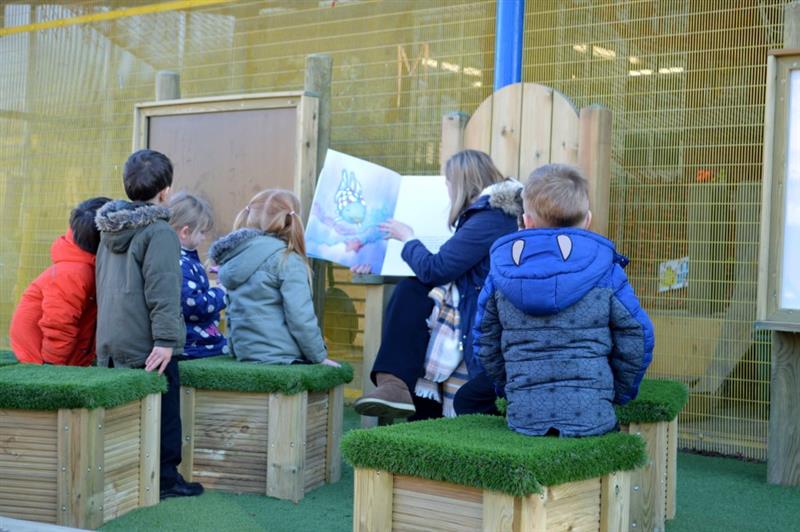
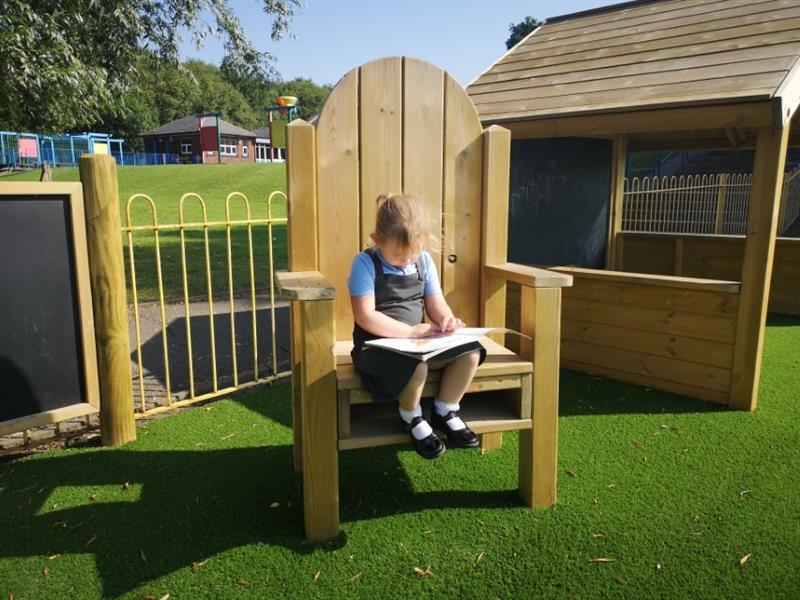

.jpg)
.jpg)
.jpg)
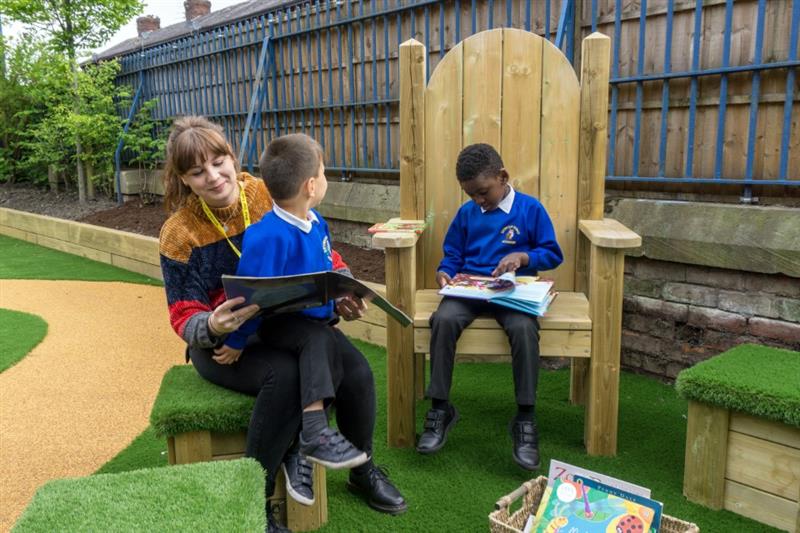

.jpg)
.jpg)
.jpg)
.jpg)
.jpg)

